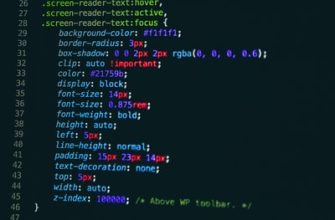Keywords broad match gives you control over who your ads show up to, rather than only showing up to everyone. It’s also a great way to get rid of new search terms that aren’t relevant to you. This makes it easier to be relevant to all kinds of searches, and to target what’s known as the “long tail” of keywords.
Machine learning can help advertisers match keywords
When it comes to targeting ads for keywords, there are three types of match. Exact Match, Broad Match, and Phrase Match. While there are similarities between these, each has its own advantages. It is important to choose the type of matching for your campaigns.
The most precise match is the exact match, which targets identical queries. It is also the most competitive of the three. However, ad platforms offer other match types that are more flexible.
Broad match is the most loosely defined match type. It allows ads to appear for any variation of a keyword. It also allows for more text in your ads. This may seem like an advantage, but it can also be a disadvantage.
Broad match is a great way to discover new keywords. It is also helpful for connecting with users who are just beginning to explore a particular category.
You can easily target what’s known as the ‘long tail’
If you’re looking to make some serious headway in your SEO campaign, consider targeting what’s known as a long tail. The term refers to a keyword or phrase longer than three words that’s relevant to your website. Using the long tail to your advantage can boost your reach, improve conversion rates, and increase your overall sales.

One way to do this is by using a free keyword tool. This can help you discover the best, most relevant keywords for your website.
For example, you could use the long tail to target what’s known as the “iceberg effect”. When customers search for something, they might click on a number of different websites and products. However, if you target a large amount of irrelevant keywords, you might end up paying a lot of money for each click.
It’s harder to be relevant for all search queries
Broad match is a type of keyword match that allows advertisers to reach the largest number of searches possible. However, it’s more difficult to target a wide audience with this match type. The key is to create a negative list to exclude search terms that are irrelevant or inappropriate. This helps you narrow down irrelevance and ensure that your ads only show up to users who are actually interested in your product or service.
If you’re using Broad Match, it’s important to monitor your campaign. You can do this by monitoring ad performance and your keyword lists. You should also build a large, detailed negative list.
Broad match is a valuable tool for advertisers, but it can have serious consequences. One of the biggest is that it can result in a higher cost per click. Another is that it can generate a low conversion rate.
It’s a great way of ‘flushing out’ new search terms
Broad match is a great way to flush out new search terms. It works by matching keywords to multiple ad groups. This can be especially useful for advertisers with limited keyword lists.
Broad match has its advantages and disadvantages. One of the main drawbacks is that the actual term in the query can be irrelevant. Another is the ‘Iceberg Effect’. If a large portion of ad impressions are from broad match, it can lead to low clickthrough rates.
A better option is a modified broad match. This allows you to keep keywords flexible while still reducing the number of irrelevant searches. You can make this work for you by keeping an eye on the search term report.
The Google Ads Keyword Tool offers an array of features. You can choose from different match types, and also add negative words to your ad groups.
It gives you more control over who sees your ads
Broad match gives you more control over who sees your ads. However, this match type is not always the best option for beginners.
The main downside of this match type is that it will waste your ad budget on irrelevant traffic. This is especially true if you are new to Google Ads. The key is to strike a balance between reaching a large audience and showing ads to the right people. This can be done by incorporating a few different match types into one campaign.
Rather than using the default broad match, you can use the phrase match or the broad match modifier. By combining these two, you will have a more flexible campaign. This means that you will be able to uncover previously undiscovered keywords.








